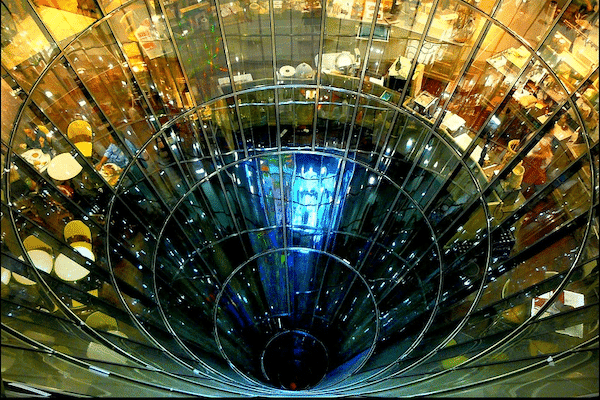The glass in the houses has been gaining more weight in the construction, first paying attention to its insulation capacity and, later, playing with their shapes and other properties. The trend in architecture is to try to seek the maximum use of natural light. And that, inevitably, goes through the glazing, not only in windows but also in complete enclosures on terraces or porches, with which we will have wonderful panoramic views of the exterior.
Thanks to technology, it is now possible to enjoy curved glass, with which an extraordinary range of possibilities has been opened up for designers and architects, being able to play with large glass panels of geometric complexity. This type of solutions, such as those offered by manufacturers like Cridesa, combine elegance and functionality in the same space.
Achieved its curvature by heating -until it reaches the plasticity necessary to adapt to a mold-, the glass treated in this way does not loos of properties such as insulation or even the possibility of having security glass (in fact , in case of breakage, there is no danger because the resulting fragments are harmless).

Different finishes
According to the finish that is made to cool the glass, we can distinguish different types of curved glass, which offer different characteristics:
- Annealing: Achieved through slow heating and cooling, it is one of the most common due to the high optical quality it provides.
- Tempering: Obtained by convection heating and rapid cooling, the result offers high mechanical strength.
- Thermo-strengthened glass: Especially recommended for installations where large thicknesses are not required.
- Chemical tempering: Ideal for applications of high mechanical resistance that have to fit into complex designs.
Advantage
The curved windows offer a high added value for the construction of unique homes. By not presenting clamps marks on edges and allowing the glazing without carpentry frames, they are an exceptional resource to equip the houses with exclusive finishes.
On the other hand and from a more functional point of view, this type of crystals offer good reflection and optical refraction. In addition, they have a greater resistance to any of the mechanical efforts to which glazings are subjected, such as wind, snow, etc.; with the added advantage that it significantly decreases the risk of rupture due to thermal shock.
In addition, we cannot forget the freedom of design that provides this type of glazing to architects, who are not even limited by size, since it is possible to obtain curved glass of large dimensions.
Thermal glass
Another property that is increasingly used in houses is the thermal glass, that is, those capable of transforming sunlight into electricity.
Its advantages, besides favoring the reduction of energy consumption, also extend to a perfect isolation, avoiding losses of cold in winter and heat in summer; acoustic insulation and let the light pass without heat.
Manufacturers such as Cridesa and Physe have this type of glass (also called ‘Power Windows’), with which you can get savings of up to 40%, while contributing to the care of the environment.
The SmartSkin range of this last-mentioned manufacturer is especially interesting, because thanks to the patented technology that integrates solar cells in the glass and its connection with its energy efficiency system, it is possible to store and distribute energy. The system goes further and, in addition, is able to perform the necessary calculations to achieve the ideal configuration to increase the comfort levels in the air conditioning of the rooms.







Leave A Comment